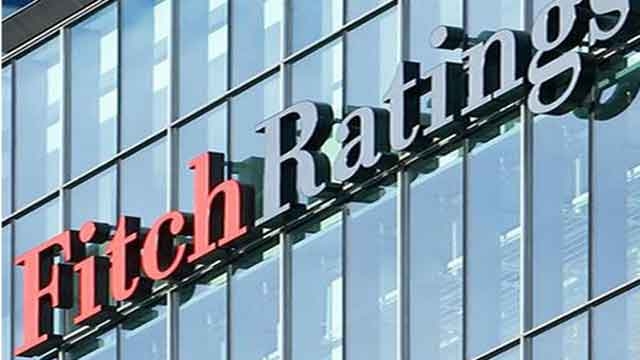
The takaful sector has benefited from strong earnings in 1H2020 driven by fewer motor and medical claims but earnings could drop in 2H2020 and 2021. Some insurers will therefore need to revisit their business models and significantly strengthen their capital buffers, says Mr Emir Mujkic of S&P Global Ratings.
Measures adopted by governments around the world to contain COVID-19, including travel bans and curfews, have pushed the global economy into recession. The sharp decline in the oil price has also had a negative impact on the balance of payments, fiscal revenues, and GDP growth of economies in the Gulf.
While weaker economic conditions have already led to a number of negative rating actions on sovereigns, corporates and banks in the regions, the takaful (as well as non-Islamic) insurance industry in the GCC has remained broadly resilient in 2020 so far. This is mainly because of a drop in claims in the first half of the year, following government-imposed restrictions on movement.

However, as reported claims have returned to more normal levels, the weak economic environment, ongoing volatility in asset prices, and a marked increase in competition could negatively affect premium growth and earnings prospects in 2020 and 2021. Ongoing capital market volatility and an expected slowdown in premium collections could put further stress on earnings, capital and liquidity management. Some insurers will therefore need to revisit their business models and significantly strengthen their capital buffers.
Strong capital buffers protect takaful operators
So, why have there been no rating actions on takaful operators so far?
First, the industry has benefited from profitable results in the run up to 2020 and most S&P rated insurers entered the year with relatively strong capital buffers, which helped them to sustain the initial shock when equity markets in the region declined by more than 20% in March/April.
Second, the industry recorded a strong improvement in earnings in the first half of 2020, driven by fewer claims (see Figure 1). COVID-19-related medical costs have been covered by most governments in the region and there have also been only a few claims in other lines, as most standard policies exclude pandemics.
In addition, insurers also benefited from a material decline in motor and medical claims, following government-imposed restrictions on movement. These two lines together represent more than 60% of total GWP in most GCC markets.
Third, the impact of weaker economic conditions and slower consumer spending may have not fully reached the industry yet. We anticipate that the number of insured individuals under medical policies will decline and that some employers will opt for more basic products for their employees in an effort to save costs. Consumers will also likely defer purchases of new cars and other items due to the economic uncertainty and some government-sponsored infrastructure projects will probably be delayed until the spread of the virus is contained. This will consequently result in lower premium volumes as well as an increase in competition, as companies try to maintain or even grow their market share.
Although longer-term growth prospects remain satisfactory, insurers will continue to depend heavily on economic growth and regulatory-driven initiatives, such as the implementation of new compulsory insurance covers. That said, the industry could also benefit from a move to digital distribution channels and a stronger focus on life and savings (family) insurance products to capture a potential increase in demand, as this line currently only contributes less than 4% of total premiums in Saudi Arabia.
Potential growth for Saudi market
We now expect year-on-year premium income to decline in most markets in the GCC in 2020 and 2021. Only in Saudi Arabia – where the sector contributes about 85% of total GWP in the Islamic insurance industry in the region – is expected to grow by up to 5% in 2020 and 2021, mainly driven by the introduction of mandatory medical covers for pilgrims, a new inherent insurance defects (IDI) scheme for properties, and changes to policies relating to motor leasing business.
Overall, the sector will remain profitable, but earnings could drop in the second half of 2020 and in 2021, as investment returns remain volatile, policyholders push for rate cuts and brokers demand high commission. Cost-cutting measures and more automation could help companies to manage their expenses, but a marked increase in competition will eat into earnings.

Insurers have already lowered rates in a number of lines through no claims discounts and other discounts. In addition, some brokers have increased their commissions to up to 30% for some motor policies, leaving insurers with thin or no profit margins.
Capitalisation and other market pressures
In terms of capitalisation, the sector’s total shareholder equity increased by 10% to about $5.5bn in the first six months of 2020 from about $5bn during the same period in 2019. The increase was driven by profitable earnings and a number of rights issues, as some insurers raised new capital to strengthen their position.
However, premiums and earnings remain highly concentrated among a small number of large companies. For example, the five largest primary insurers in Saudi Arabia had a market share of about 68% (2018: about 66%) and a combined profit of about $279m, while the remaining 26 insurers recorded a combined loss of about $41m.
The ongoing volatility in capital markets will most likely cause weakening credit conditions for the industry over the next one to two years. The expected slowdown in premium collections, as many businesses try to delay their premium payments in an attempt to survive, could put further stress on liquidity and asset quality, particularly on companies that already have thin capital buffers.
In anticipation of longer payment cycles, the regulator in Saudi Arabia has granted insurers permission to treat receivables that are outstanding for more than 90 days more favourably – similar to practices in other markets – to ease potential pressures on solvency calculations.
Proposals to increase minimum capital requirements in Saudi Arabia and the implementation of a new law with higher capital requirements in Kuwait will be delayed, in order not to put any further capital constraints on the industry.
Nevertheless, some insurers will still need to take action to restore their capital levels in the near future. Accumulated losses have eroded the capital of a number of takaful operators over the past few years. As a result, about 10% of companies in the market have stopped writing business in recent years. About 40% of takaful operators in the UAE do not meet the current solvency requirements.
Saudi Arabia and UAE to see more M&A activity
Following a number of recent merger announcements in Saudi Arabia and the UAE, we expect to see further consolidation in the industry in 2021. However, given the relatively large number of loss-making entities (more than 20% of takaful operators reported a loss in 2019), mergers will only be beneficial if shareholder expectations are realistic in terms of valuations and companies can benefit from factors such as larger scale, access to new lines of business, or other synergies.
Overall, while a number of small and medium-sized entities operate successfully, the consolidation of the takaful sector would help improve the operational scale and capital base of companies. This should allow them to retain more risk, while also preparing them for highly competitive market conditions. M
Mr Emir Mujkic is director, insurance ratings at S&P Global Ratings.